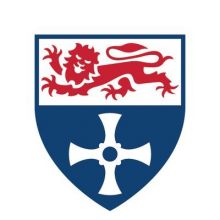Higher education providers with the most unequal student bodies are the least likely to hit access and progression targets, an analysis reveals.
The Office for Fair Access’ latest review of institutional performance on widening participation, published on 12 May, says that English institutions that already had a high proportion of students from under-represented groups met or were on course to meet 75 per cent of targets relating to admissions, retention and attainment during 2014-15.
In contrast, similar progress was reported on only 63 per cent of targets set by institutions with low proportions of undergraduates from disadvantaged backgrounds.
For the first time, Offa is releasing details of each provider’s performance, revealing that some universities in the Russell Group of highly selective institutions are struggling to make progress on access and progression.
The London School of Economics, which set six targets in this area, said that it was on course to meet only one, with less progress than anticipated reported on three and no improvement recorded on the other two. While the University of Oxford met two of its four targets, it made less progress than anticipated against the other two, and Newcastle University’s assessment that it was on course to meet six of its 14 targets was offset by acknowledgement that it made less progress than anticipated against seven targets and none on one.
Overall, 70 per cent of access and progression targets approved by Offa for 2014-15 were met or were on course to be met, with positive progress – albeit less than expected – being reported on a further 17 per cent. On 13 per cent of targets, there was no or even negative progress.
The report, Outcomes of Access Agreement Monitoring for 2014-15, underlines the challenges English higher education institutions face to meet the prime minister’s goal of doubling the rates of young people from disadvantaged backgrounds entering higher education by 2020.
In the report’s foreword, Les Ebdon, the director of fair access to higher education, says that the target will be “a tough one to meet” and, on current trends, “will be missed”.
“I want all institutions to strive for further, faster change,” Professor Ebdon says. “That’s especially the case for universities with the highest entrance requirements, where the participation gap between the most and least advantaged remains large and wholly unacceptable.
“I am fortunate to see the commitment on the ground to widening participation on my visits to these universities, but a step change in progress is needed.”
Only 34 institutions (21 per cent) met or were on course to meet all of their targets on admissions, retention and attainment during 2014-15.
A further 98 (61 per cent) met or were on course to meet at least half of their targets, with the remaining 29 falling further behind.
The report also indicates that higher education institutions are struggling to tackle the collapse in the number of mature and part-time students.
While progress was reported on between 85 and 93 per cent of targets relating to areas such as socio-economic class, ethnicity and disability, only 75 per cent of targets relating to mature students resulted in improvements.
Fewer than one in eight institutions set targets relating to part-time students in 2014-15, and only 61 per cent of these targets resulted in improvements.
POSTSCRIPT:
Print headline: Elite universities least likely to hit goals on access and progression
Register to continue
Why register?
- Registration is free and only takes a moment
- Once registered, you can read 3 articles a month
- Sign up for our newsletter
Subscribe
Or subscribe for unlimited access to:
- Unlimited access to news, views, insights & reviews
- Digital editions
- Digital access to THE’s university and college rankings analysis
Already registered or a current subscriber? Login









